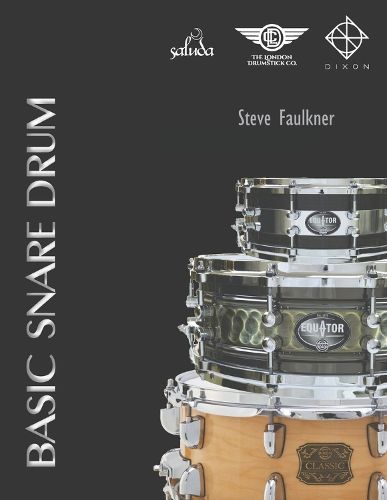Readings Newsletter
Become a Readings Member to make your shopping experience even easier.
Sign in or sign up for free!
You’re not far away from qualifying for FREE standard shipping within Australia
You’ve qualified for FREE standard shipping within Australia
The cart is loading…






The book starts with Whole notes and Whole rests and graduates in the correct chronological order. Whole notes and Whole rests, Half notes, and Half rests, Into Quarters, to Eighths, Sixteenths, and Thirty Second. As the notes and rests graduate, they also combine the previous rhythms. It is imperative that you pat your foot correctly and make your hands follow your foot. Timing is from the feet up not the hands down. Triplets, dotted notes, ties, and basic music theory are explained in the book. The book can be used as a drum set method. All the examples can be played on the drum set. To begin this process, you would put Quarter notes on the bass drum, and the hi-hat on beats 2 and 4 with your foot. Play all the examples on the snare drum to start. Then, move the rhythms around the kit. You can also play a "Swing rhythm on the Ride Cymbal and play the snare drum example with your free hand. A competent instructor will also be a great deal of help. He or she can guide you in the right direction. After completion of this book, you will have a solid rhythmic foundation that you can build upon. Practice and enjoy the book and the process! Steve Faulkner
$9.00 standard shipping within Australia
FREE standard shipping within Australia for orders over $100.00
Express & International shipping calculated at checkout
The book starts with Whole notes and Whole rests and graduates in the correct chronological order. Whole notes and Whole rests, Half notes, and Half rests, Into Quarters, to Eighths, Sixteenths, and Thirty Second. As the notes and rests graduate, they also combine the previous rhythms. It is imperative that you pat your foot correctly and make your hands follow your foot. Timing is from the feet up not the hands down. Triplets, dotted notes, ties, and basic music theory are explained in the book. The book can be used as a drum set method. All the examples can be played on the drum set. To begin this process, you would put Quarter notes on the bass drum, and the hi-hat on beats 2 and 4 with your foot. Play all the examples on the snare drum to start. Then, move the rhythms around the kit. You can also play a "Swing rhythm on the Ride Cymbal and play the snare drum example with your free hand. A competent instructor will also be a great deal of help. He or she can guide you in the right direction. After completion of this book, you will have a solid rhythmic foundation that you can build upon. Practice and enjoy the book and the process! Steve Faulkner